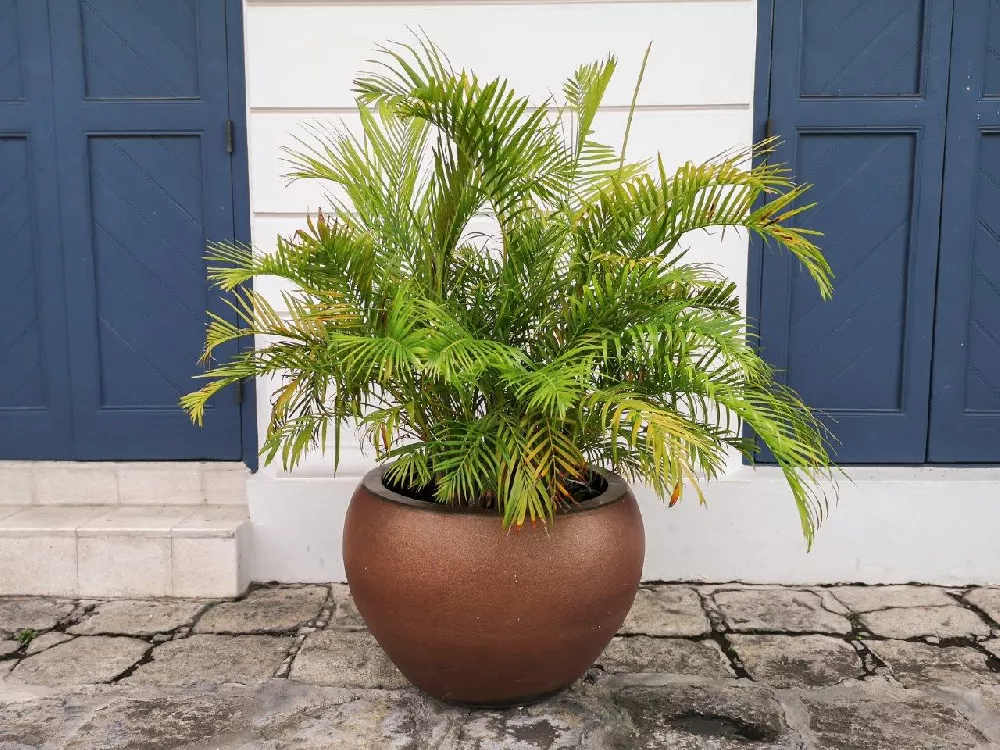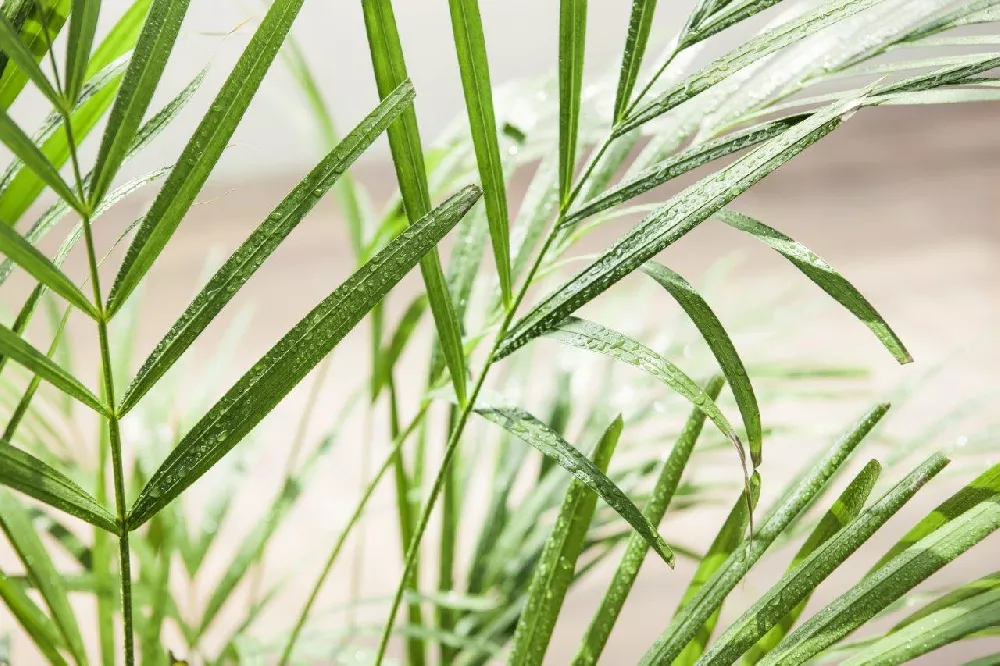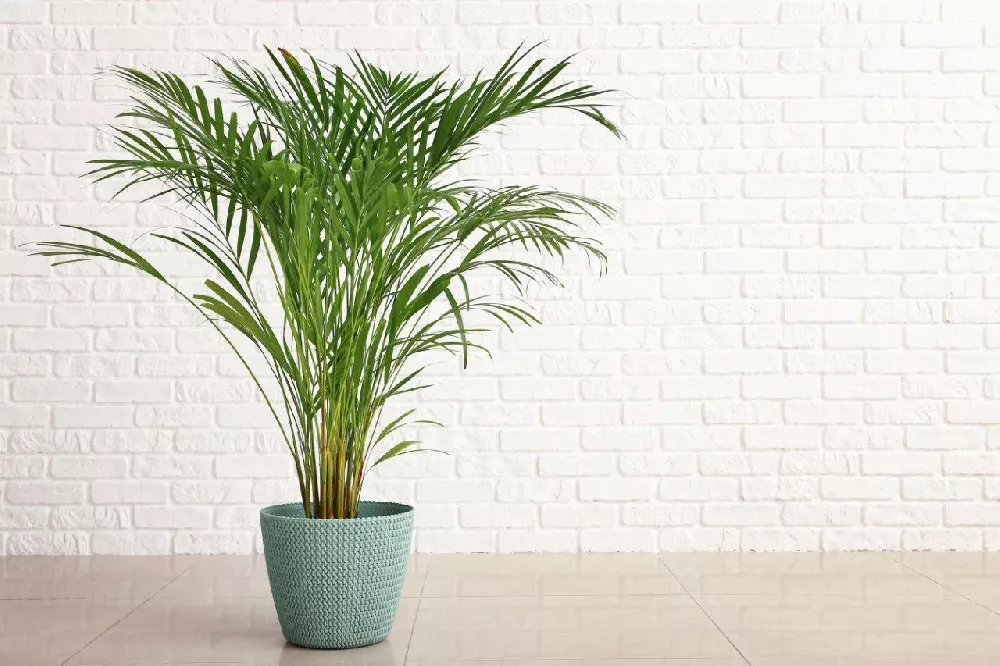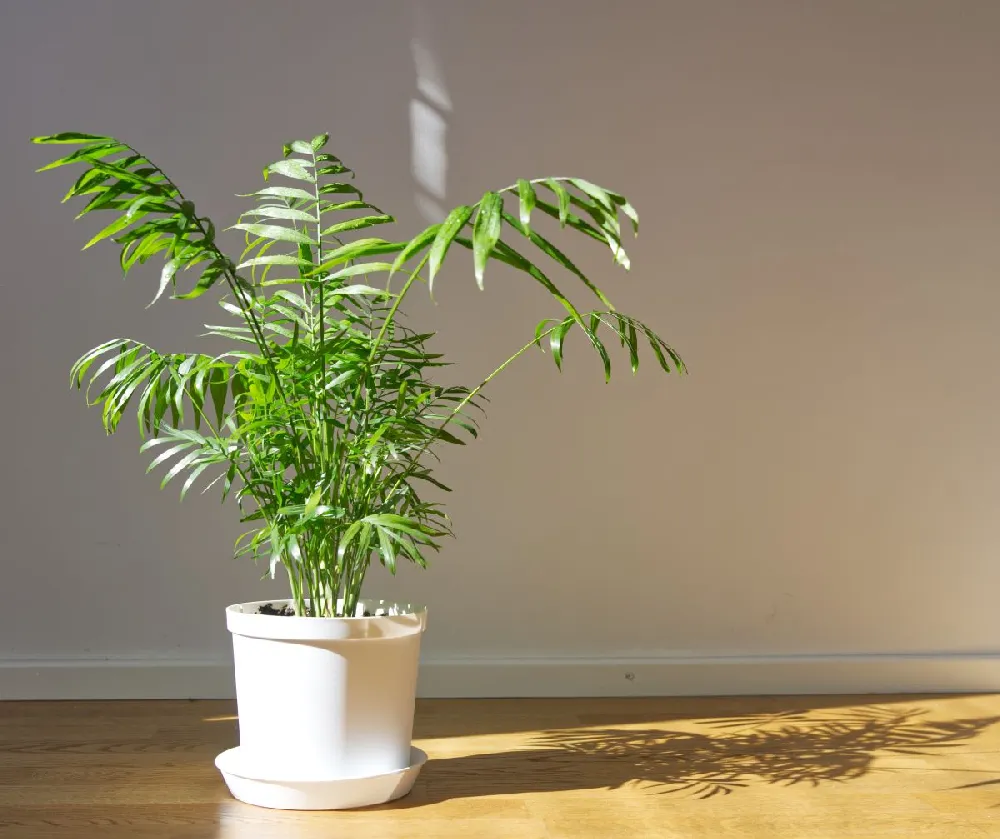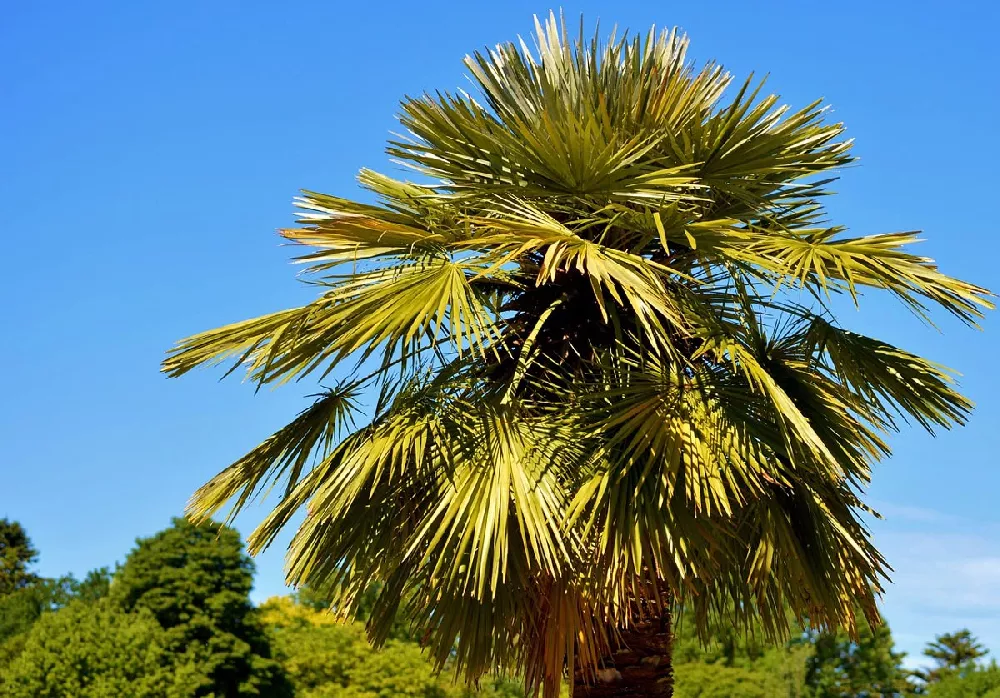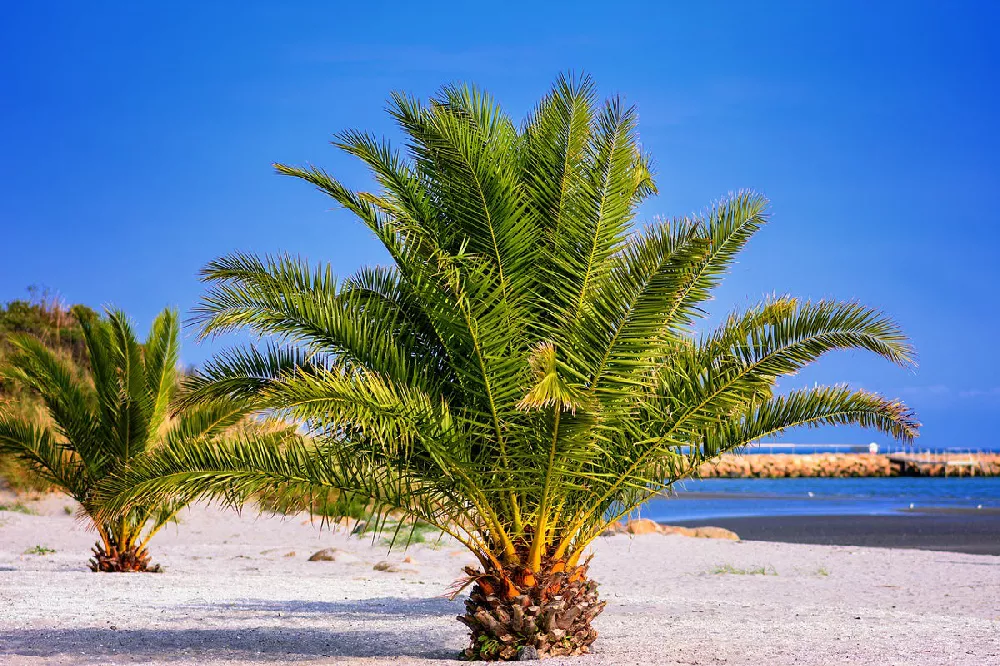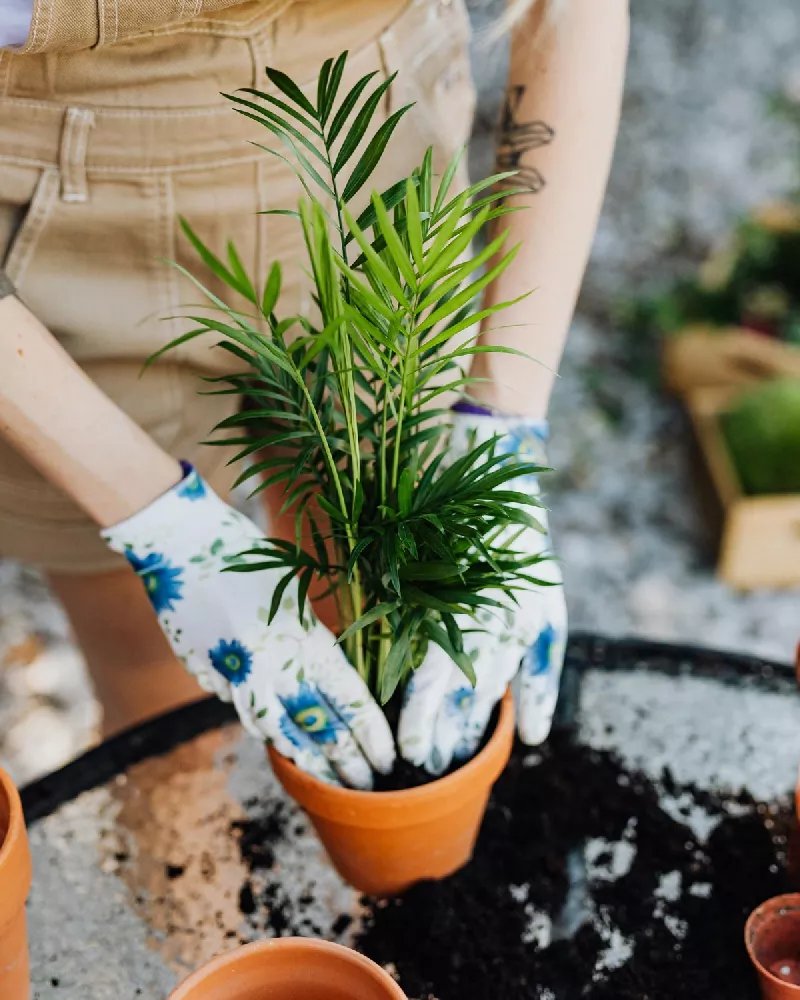- Home >
- Shrubs and Bushes >
- Foliage >
- Areca Palm Trees
Areca Palm Trees for Sale
- Ships in 1-2 days
- 1-Year Warranty Eligible
- Pots or accessories are not included unless specified in the product options.
Shipping Details:
Products shipped through FastGrowingTrees.com. Once your order is shipped, you’ll receive an email with a tracking number and estimated delivery date. Most orders will ship immediately.
A native of Madagascar, the areca palm tree (Dypsis lutescens) is an ideal way to add some tropical flair to your home. The areca palm boasts lush, bright-green leaves on its delicate, arching fronds as well as its yellow rachis. Other notable features include:
- Can be grown outdoors in USDA hardiness zones 9-11
- Also known as the bamboo palm, butterfly palm, and golden cane palm
- A low-maintenance, easy-to-care-for plant
Plant Care
Sunlight

Grows well in bright light or in filtered, indirect light.
Watering
Soil must remain moist but overwatering can cause root rot.
Fertilizing

Enjoys a granular fertilizer that has plenty of potassium. Add fertilizer about three times per growing season.
Planting and Care
Planting instructions
Areca palms are primarily grown as houseplants in North America. When potting an areca palm, choose a pot with drainage holes, and use a well-draining potting soil, as these plants do not like to sit in soggy soil. Areca palms like bright, indirect sunlight, so place your plant near a south or west-facing window. Direct sunlight will burn the leaves, causing them to turn yellow. Since areca palms are a native tropical plant, they don’t respond well to cold drafts or sudden temperature drops.
Watering and nutrients
Areca palms need regular watering, but overwatering can make it susceptible to root rot and turn its leaves brown. During the spring and summer months, water your areca palm often enough to keep the soil lightly moist. In the fall and winter, let the soil dry slightly in between waterings. Fertilizer is not a necessity for areca palms, but it can help them grow faster. If you want to fertilize your areca palm, use a time-release fertilizer with an NPK value of 8-2-12 three or four times a year. This should give it all the necessary nutrients for the entire growing season.
Pruning
One of the benefits of the areca palm is that it is relatively low-maintenance and doesn’t need regular pruning. In fact, your areca palm will be healthier if you only remove dry or dead leaves as necessary. However, because areca palms can grow quite large (six to 10 feet indoors), you may need to occasionally trim it to make sure it fits in its allotted space. It’s best to trim an areca palm in early spring, before the growing season begins. Remove older fronds with sharp, clean scissors or shears.
Pests, diseases, and animals
Areca palms are not susceptible to many diseases. Brown leaves indicate that the plant may be suffering from root rot. Yellow leaves are a sign that your areca palm is getting burnt from too much direct sunlight. Some common pests that trouble these plants include red spider mites, mealy bugs, scale insects, and whiteflies. For scale infestations, remove the affected leaves. For other types of infestations, spray the leaves twice daily with fast jets of water until the infestation clears up, or treat leaves with an insecticidal soap or neem oil.
Light
This plant has a high dependency on light and will need to be placed in a brightly lit spot in your home. Many owners struggle to find an area with the correct lighting, as the Areca Palm needs lots of bright light, but won’t be happy in indirect light, which will turn the leaves a yellowing color. A windowsill that receives lots of natural daylight will be the best place for the plant, and if necessary, filter direct sunlight with blinds or curtains. While this plant isn’t especially difficult to grow, it is quite specific in its requirements. If the plant doesn’t get enough of the right light, then it will struggle to thrive and survive.
Temperature
The Areca Palm enjoys temperatures usually found in homes, ranging between 65° F and 75° F. It should be kept away from doorways or other areas that might be susceptible to cold drafts. The plant should not be allowed to sit in temperatures of below 55° F, and sudden temperature drops will cause the plant to suffer, causing brown spotting on the leaves.
Humidity
This plant is happy in the typical humidity found in homes and does not need any special treatment. The only instance when you make like to make an effort to increase humidity around the plant is if your home is experiencing very dry air. Dry air can cause tips of the leaves to turn brown. This can be prevented by lightly misting the plant with water. Alternatively, you can sit the plant on a tray of pebbles surrounded by water. As the water evaporates, it will cause the humidity levels around the plant to rise.
Propagation
Propagation of Areca Palms is done with seeds. The seeds can be difficult to come by because they are not commonly grown from seed by amateur gardeners, as they frequently fail to grow. If you do try your hand at growing an Areca Palm from seed, select the older seeds, which are orange in color, and not green like the newer seeds. The older seeds have a higher rate of germination and are more likely to bring success.
Many seeds can be planted together in clusters, which will then take around six weeks to germinate. They will require a higher than average humidity and a warm temperature of around 80° F. A heated propagator would be the easiest method of maintaining the correct humidity and temperature levels, with a better chance of success (Royal Horticultural Society).
Repotting
This plant doesn’t need to be potted very frequently as it tends to fare better when it is pot-bound. It likes to be in quite a tight fitting pot for its roots, and this will also help to limit the size of the plant; however, it’s always a good idea to re-pot just to freshen up the soil that the plant is sitting in. You can re-pot this plant around once every three years, or more often if it looks like your Areca Palm is struggling as a result of being pot bound. Some people get away without ever re-potting their Areca Palm, as its lifespan is only around ten years.
Areca Palms are potted in clumps, and can form their own clumps as they grow. To re-pot, carefully remove the palm from its current soil, taking care not to harm the root ball. This plant may struggle in its new pot if you disturb the roots too much, so use a gentle touch. Select a new pot that is one size bigger than the size you were currently using, and pot your palm into it, making sure that the root ball is buried at the same height as it was in the last pot. Notice on the stems where the soil previously came up to, and make sure the new soil doesn’t go any higher than this.
Potting the plant into fresh soil will be a particular help if the plant has been struggling as a result of salt and fluoride buildup. For the new soil, use a palm specific potting soil, or a mixture of standard houseplant potting soil with a handful of builder’s sand thrown in.
Common Problems & Pests
Common Problems
Yellowing leaves
Yellow leaves are not normal for the Areca Palm, and usually indicate that the plant is not receiving enough water. Remedy this by giving your plant more frequent waterings, and the plant should recover very quickly.
Yellow spots
If the leaves of your palm are turning yellow only in small spots, then this is likely caused by potassium levels of the soil being too low, or the acidity level of the soil may be too high. Adjust your fertilizer to try to balance out the levels, and if necessary, you could re-pot the plant to start with fresh soil.
Brown tips
Brown tips are usually not a watering issue, but instead are caused by cold drafts, or the air being too dry. Use a process of elimination to figure out what is causing the tips of your plant to turn brown, and address this accordingly. You may want to move the plant to a more secluded spot away from cold drafts, or spray it with a misting water spray to increase humidity.
Brown leaves or spots
Brown leaves on the underneath of the plant are not a problem; this is a natural occurrence and removing them by cutting or allowing them to fall off will promote new growth. Brown leaves elsewhere on the plant is a cause for concern, and is typically caused by overwatering. If you suspect this is the case, simply water the plant less frequently and it should recover quickly. Check that the soil is dry to the touch before watering it, and the problem should not recur.
If you don’t think the plant has been over watered, then the cause of brown leaves or brown spots on the leaves could be due to a sudden temperature drop, too much fertilizer, or a response to being watered with hard water. If you live in a hard water area, you could try using bottled water on your plant, or collect rainwater, and see if this helps. Using a more diluted fertilizer to feed the plant, or moving the plant away from cold draughts may resolve the issue.
Root rot or pink rot
These problems are serious, and are caused simply by overwatering. Root rot can quickly kill a plant or damage it to a point where it cannot be saved. Prevention is the best medicine for root rot, and can be achieved very simply by ensuring you have a good drainage system in place, and by being careful to not over water your Areca Palm.
Use a well-draining soil and ensure that your plant pot has holes at the bottom where unused water can drain away. The drip tray should be emptied on a regular basis so that the plant doesn’t have to sit in water. Always test the soil before adding more water, this will ensure that the plant does not become overwatered.
Pests
This plant is vulnerable to many pests, including scale, mealy bugs, red spider mites, and whitefly.
Red spider mites
These pests like to feed on the dust found on the foliage of the Areca Palm. Dust tends to accumulate more when humidity is low, so you can try to prevent this problem by keeping humidity high. You can do this using an electric humidifier, or simply spray the plant’s leaves occasionally with a misting water spray. If a spider mite infestation has already occurred, you can usually get rid of it by sponging the leaves with soapy water.
Often, an infestation can become quite bad before you even notice, as spider mites are so tiny they can usually only be seen with a magnifying glass. You will usually spot the damage before the infestation, which can include mottled yellow leaves, brown leaves, and stunted growth. To discover if you have a spider mite infestation, place a piece of white paper under your plant and tap the leaves. This will cause the spider mites, if they are present, to fall out onto the paper for identification.
To treat a spider mite infestation, take the plant outside and spray it with a powerful jet of water. Do this twice daily until the infestation is under control. If this doesn’t work, you can try using neem oil or insecticidal soap.
Scale
Scale insects present themselves as small round or oval white lumps, with no identifiable features, such as body parts. They are usually found on the underside of leaves, which can look whitewashed if the scale infestation is severe. They can attack a whole plant but are usually most prevalent on the foliage of Areca Palms, sucking the sap from the plant with their straw-like mouths. The result of this will be brown spots on the leaves of your plant, as well as curled up, dropping leaves, and eventually, a dead plant.
There are several different types of scale, and you need to identify which type you have before attempting to remove the infestation, as different types will respond to different treatment.
While most types of scale are just a nuisance and inconvenience to deal with, some types are dangerous and can quickly destroy a plant beyond the point at which it can be saved. This type of scale is most commonly found on palms which are sitting in heavily wet soil, or which have poor drainage. This is another reason to try to avoid overwatering your palm.
If you identify a scale infestation, do not try to wash them off the leaves, as this can actually encourage new scale infestations. Instead, cut off heavily affected leaves and dispose of them carefully. Prune back different sections of the plant to thin it out and ensure that all of the leaves have access to light. High levels of continued exposure to sunlight will naturally control scale infestations.
If further pest control methods are needed, use a horticultural oil to keep the scale infestation at bay, or introduce natural scale predators such as lacewings, beetles, and ladybugs. A pesticide is rarely needed to control scale and should be the final resort as it can harm the natural balance of ‘good’ insects.
Mealy bugs
Mealy bugs look like a fluffy white substance on your plant, and usually reside in the nooks of plants where they are difficult to spot and remove. They suck vital nutrients from the plant and leave behind a sticky residue which in time becomes black. The black residue is actually mold, and should be removed with care.
Mealy bugs can usually be removed by spraying them with a fast stream of water. Take your palm outside and spray it with a water hose, focusing on areas where mealy bugs may be hiding. If this doesn’t resolve the issue, you can use tweezers to remove the mealy bugs, or wipe the leaves with rubbing alcohol.
Whitefly
These pests are much easier to spot, as the adults are white winged creatures who fly away as soon as you disturb the leaf they are on, while the juvenile whitefly resemble scale insects. They are found on the underside of leaves, where they suck the sap from the plant, compromising its health. Whiteflies secrete a sticky substance, which is left behind on the leaf after they have fed on the sap. This will turn into a black soot-like substance, which is actually a fungus growing on it. If you have a whitefly problem, you will likely soon have an ant problem too, as the ants are attracted to the sticky substance the whiteflies leave behind.
To tackle a whitefly infestation, in the first instance spray the plant outside with a strong stream of water. This can be repeated twice a day until the infestation is gone, focusing on spraying the underside of leaves. Alternatively, placing yellow sticky tape near the plant is usually very effective at removing whiteflies, as the adults are drawn to yellow and get stuck on the tape.
FAQs
How big do areca palms grow?
Should I use filtered water for my areca palm?
Yes, it is best to use filtered water instead of tap water for your areca palm. These plants are sensitive to minerals, particularly fluoride, which are typically found in tap water and can cause discoloration. If you live in an area with high fluoride content in your tap water, it’s best to use filtered or distilled water, or, if possible, place your areca palm outdoors during rainfall to water your plant.
How often should you repot an areca palm?
We recommend repotting areca palms every two to three years. This will help limit the size of your plant, which is useful if you have limited space. Repotting in fresh soil can help if your areca palm is struggling due to mineral buildup. To repot, remove the palm from its current soil, taking care not to harm the root ball, and place it in a new pot one size larger than your current pot. Bury the root ball at the same height as it was in its previous pot.
How do you propagate an areca palm?
You can propagate areca palms from seeds or offshoots. Seeds can be hard to come by, but if you have access to them select older seeds, which are orange in color, and have a higher rate of germination than younger seeds. Plant the seeds in a cluster, and keep them at an average temperature of 80 degrees Fahrenheit with high humidity. To grow from an offshoot, remove an offshoot from the base of the plant, keeping roots intact, and plant in well-draining soil.
Are areca palms toxic?
As areca palms are typically grown indoors, it’s important to know if they can cause harm to household pets like dogs and cats. Luckily, as the ASPCA notes, these types of plants are nontoxic to dogs and cats, making it one of the best options for indoor palms for pet owners. Areca palms are also nontoxic to humans.
Compare Similar Products
Customer Reviews
 Good
GoodBoth plants came in good. Some of the leaves were bent and broken. Portion of the soil was out of the pot. Expected as much from delivery so not too big of an issue. Will have to see if the damage leafs cause any issues.
 Cats Love Eating this Plant
Cats Love Eating this PlantArrived quickly, survived the transplant to a new container. Glad to know it's not toxic to cats, as they are infatuated with eating the fronds, I've had to protect it from them.
 Thank you
Thank youI got my plants upside down. Although they were packed very well. They are still small and yet to see the growth. Thank you
 hot weather seems to be burning the leaves
hot weather seems to be burning the leavesexperience, good But what are things I need to do to have a healthy looking appearance?
 Beautiful plants
Beautiful plantsPlants arrived quickly on a Sunday which worked out great. Set them out in the sun for two days after a good watering. Thank you.
